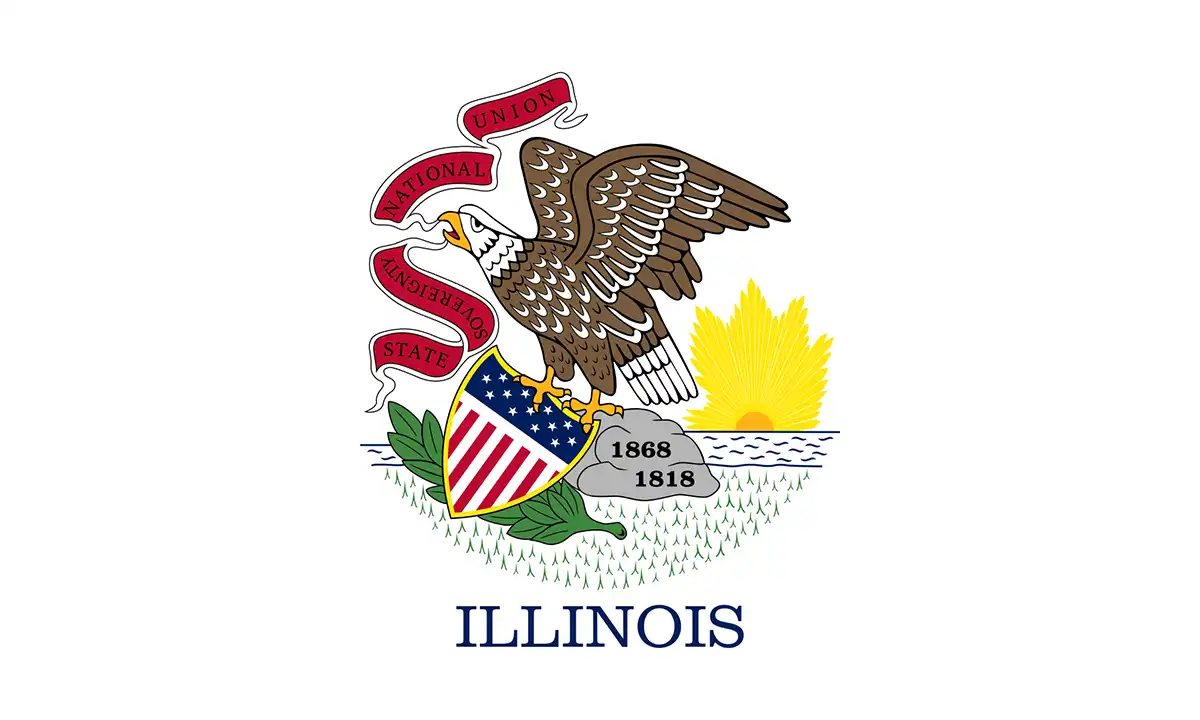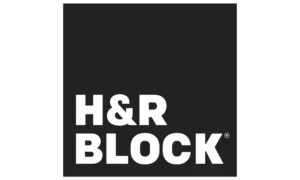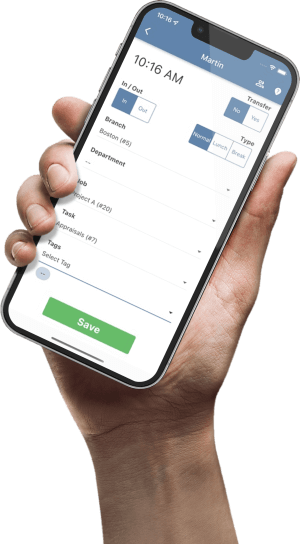Free Illinois Payroll Tax Calculator

Illinois Payroll Tax Calculator (Step-by-Step)
Understanding your paycheck is crucial, and our Illinois Payroll Tax Calculator simplifies the process. Follow these easy steps to get an accurate estimate of your net pay:
Step 1: Enter Your Location and Filing Status
- Country: Ensure “United States” is selected. (This is pre-filled.)
- Province/State: Choose “Illinois” from the dropdown menu. (This is pre-filled.)
- Federal Filing Status: Select your current federal filing status (e.g., Single, Married Filing Jointly, etc.) from the dropdown. This reflects how you file your federal taxes.
- Federal Allowances: Enter the number of federal allowances you are claiming. This number affects the amount of federal income tax withheld from your paycheck. (Use your W-4 form as a guide.)
- State Filing Status: Choose your current Illinois state filing status from the dropdown. It may be the same as your federal status, but confirm based on your state tax situation.
- State Withholding Allowances: Enter the number of state withholding allowances you are claiming. This number affects the amount of Illinois state income tax withheld from your paycheck. (Refer to Form IL-W-4 for guidance.)
- Annual Pay Periods: Select how often you receive your paycheck (e.g., Bi-Weekly (26), Weekly, Monthly) from the dropdown. This is essential for accurate annual calculations.
- Gross Wage / Pay Period: Enter your total earnings before any deductions for the pay period. This is your gross pay.
- Pay Date: Select the pay date using the calendar tool. This is for your reference and does not affect the tax calculations.
Step 2: Input Your Pay Information
- Annual Pay Periods: Select how often you receive your paycheck (e.g., Bi-Weekly (26), Weekly, Monthly) from the dropdown. This is essential for accurate annual calculations.
- Gross Wage/Pay Period: Enter your total earnings before any deductions for the pay period. This is your gross pay.
- Pay Date: Select the pay date using the calendar tool. This is for your reference and does not affect the tax calculations.
Step 3: Calculate Your Taxes
- Carefully review the calculated results.
- If you need to make changes, adjust the input fields and click “Calculate” again.
- To start a new calculation with different parameters, click the “New Calculation” button.
Important Notes:
- This calculator provides estimates based on the information you provide and current Illinois tax rates and regulations.
- Actual tax amounts may vary based on individual circumstances, additional deductions (e.g., pre-tax benefits, healthcare), and any changes in tax laws.
- Keep your W-4 form and Form IL-W-4 updated to ensure accurate tax withholding.
Found our Free Illinois Payroll Tax Calculator useful? Bookmark and share it.

Understanding Illinois Withholding Income Tax
This section provides detailed information about Illinois withholding income tax, a crucial component of your paycheck and employer responsibilities.
Definition
Generally, as an employer or payer, you are required to withhold Illinois Income Tax from certain payments if you are also required to withhold (or have a voluntary agreement to withhold) federal income tax. This applies to:
- Employee compensation (i.e., wages and salaries) paid to employees working in Illinois.
- Gambling or lottery winnings in Illinois paid to an Illinois resident.
- Unemployment benefits paid to an Illinois resident who has requested Illinois income tax withholding.
- Purchases of rights to Illinois Lottery winnings.
- Other income such as interest, dividend, or retirement income in specific circumstances.
You must register with the Illinois Department of Revenue to withhold Illinois Income Tax.
As a withholding agent (the entity responsible for withholding tax), you are legally liable for the taxes you are required to withhold. Illinois law considers the amounts required to be withheld and paid (including any penalties and interest) as a tax on you, the withholding agent. This means you are obligated to pay the tax even if you failed to deduct it from your employee’s payment.
For more detailed information, refer to Publication 130, Who is Required to Withhold Illinois Income Tax.
Amount Withheld
- Current Income Tax Rate: The current Illinois flat income tax rate is 4.95% (as of April 2025).
- Withholding Tax Tables: For detailed information and the specific Illinois withholding tax amounts based on employee wages and withholding allowances, please refer to the 2025 IL-700-T, Illinois Withholding Tax Tables Booklet (effective January 1, 2025 – December 31, 2025). This booklet provides the necessary tables to determine the correct amount of state income tax to withhold from employee paychecks.
Credits
All withholding income tax credits are reported on Schedule WC. The Schedule WC-I, Withholding Income Tax Credits Information, provides comprehensive details about the available withholding income tax credits, instructions on how to calculate them, and where to report them on Schedule WC.
Filing and Payment Requirements
The Illinois Department of Revenue mandates electronic filing for the following forms:
- Starting with the 2017 tax year: Federal Forms W-2, Wage and Tax Statement; W-2c, Corrected Wage and Tax Statement; and W-2G, Certain Gambling Winnings.
- Starting with the 2018 tax year: Form IL-941, Illinois Withholding Income Tax Return.
If you are unable to file electronically, you may request a waiver by completing Form IL-900-EW, Waiver Request, available through the Taxpayer Assistance Division at 1 800 732-8866 or 1 217 782-3336. The completed waiver request must be submitted to the Department for approval.
Illinois withholding income tax payments are made using Form IL-501, Withholding Payment Coupon, and the Illinois withholding is reported on Form IL-941, Illinois Withholding Income Tax Return.
IMPORTANT: Ensure you use the correct version of Form IL-941 for the specific liability period you are filing. This is a calendar year form, and each year has its own distinct version. For example, you must use the 2020 Form IL-941 for all quarters within the 2020 calendar year.
Furthermore, when printing Form IL-941 from the Illinois Department of Revenue website, verify that it contains the correct federal employer identification number (FEIN) and reporting period. This information is used to generate a scanline at the bottom of the form, which is crucial for proper processing. Do not photocopy and alter pre-printed Form IL-941s. If the scanline is incorrect or unreadable, the form will not be applied to the correct period or taxpayer.
All Form IL-941 returns are due quarterly. Taxpayers are assigned to one of two payment due date schedules:
Payment Requirements
- Semi-weekly Payment Schedule (Must pay electronically):
- Pay by Wednesday for amounts withheld on the preceding Wednesday, Thursday, or Friday.
- Pay by Friday for amounts withheld on the preceding Saturday, Sunday, Monday, or Tuesday.
- Monthly Payment Schedule (Pay electronically or use Form IL-501):
- Pay by the 15th of each month for amounts withheld in the preceding month.
New Taxpayers: You are automatically placed on the monthly payment schedule and quarterly filing schedule.
For more detailed information, see Publication 131, Withholding Income Tax Payment and Filing Requirement, and Publication 131-D, Withholding Income Tax Payment and Return Due Dates.
Can my due date schedule change during the year?
- If you are initially assigned to the semi-weekly payment schedule, your schedule will not change during the year.
- If you are initially assigned to the monthly payment schedule, your schedule may change to semi-weekly if:
- You reported more than $12,000 in withholding during the “look-back” period (the one-year period ending on June 30 of the immediately preceding calendar year). In this case, you will be assigned to the semi-weekly payment schedule for the following quarter, the remainder of the year, and the subsequent year.
- You exceed $12,000 in withholding during any quarter. In this situation, it is your responsibility to begin paying your Illinois withholding income tax semi-weekly in the following quarter, for the remainder of the year, and the subsequent year.
For further clarification, consult Publication 131, Withholding Income Tax Filing and Payment Requirements.
Note: For information regarding unemployment insurance or reporting new hires, please contact the:
REVENUE DIVISION ILLINOIS DEPARTMENT OF EMPLOYMENT SECURITY 33 SOUTH STATE STREET CHICAGO ILLINOIS 60603 1 800 247-4984
Legal References
- Statutory: 35 ILCS 5/701 et seq.
- Regulations: 86 Ill. Adm. Code 100.7000 et seq.
Electronic Services
- File a Return on MyTax Illinois
- Approved Third-Party Software Vendors
- Make a Payment
- FSET (For Large Employers/Payroll Companies)
- File your W-2s & 1099s
Illinois Payroll Tax Rates
This section outlines the key tax rates that impact payroll in Illinois, including the state income tax (SIT) and the state unemployment insurance (SUI) tax.
Illinois State Income Tax (SIT)
Illinois operates under a flat income tax system, meaning all residents are subject to the same tax rate regardless of their income level.
- Flat Income Tax Rate: 4.95%
This rate applies to the taxable income of Illinois residents. Additionally, nonresidents who work within Illinois are also required to pay Illinois state income tax, unless they reside in a state with a reciprocal agreement with Illinois.
Additional Illinois SIT Details
Valid Filing Statuses: Not applicable under the flat tax system, as the rate remains constant across all filers.
Exemptions: Certain individuals are exempt from Illinois state income tax withholding:
- Nonresidents from a reciprocating state: Illinois currently has reciprocal agreements with the following states, meaning residents of these states working in Illinois are exempt from Illinois SIT:
- Indiana
- Iowa
- Kentucky
- Michigan
- Wisconsin
- Nonresident military spouses: If the nonresident spouse of a military service member is present in Illinois solely to be with their spouse who is serving in compliance with military orders, they may be exempt.
- Nonresident interstate carrier employees: Individuals employed by interstate carriers (railroads, trucking companies, airlines) whose compensation is covered by federal law are typically exempt.
- Residents performing services in another state where compensation is subject to other state withholdings: This prevents double taxation for Illinois residents working and having income tax withheld in another state.
- Employees whose compensation is exempt from federal withholding requirements: This can include certain household employees and ministers or members of a religious order whose income is exempt from federal income tax withholding.
- Nonresidents from a reciprocating state: Illinois currently has reciprocal agreements with the following states, meaning residents of these states working in Illinois are exempt from Illinois SIT:
Form W-4: Employees use the federal Form W-4 to indicate their federal withholding allowances.
Form IL-W-4: Employees use the Form IL-W-4 to determine their Illinois withholding allowances. This form helps employers calculate the correct amount of Illinois state income tax to withhold from their employees’ wages.
Reconciliation Frequency: Illinois state income tax withholding is reconciled annually. Employers report the total amount withheld and reconcile it with the payments made throughout the year when filing their annual reconciliation forms (typically part of Form IL-941).
Illinois State Unemployment Insurance (SUI)
The State Unemployment Insurance (SUI) system provides financial assistance in the form of unemployment benefits to eligible workers who become unemployed through no fault of their own, as determined by Illinois state law, and who meet the state’s specific eligibility requirements.
Illinois SUI Tax Details
- Taxable Wage Base: $13,916 (for calendar year 2025). This is the maximum amount of each employee’s wages subject to SUI tax in a calendar year. Once an employee’s earnings exceed this amount, the employer is no longer required to pay SUI tax on the excess.
- Employee Subject to Tax: No. In Illinois, the SUI tax is solely the responsibility of the employer and is not deducted from employee wages.
- Rates for Experienced Employers:* 0.75% – 7.85%. The SUI tax rate for experienced employers in Illinois varies based on their individual experience rating. This rating is determined by factors such as the employer’s history of unemployment claims. Employers with a history of fewer claims generally receive lower tax rates.
- Rates for New Employers:* 3.65%. Newly established employers in Illinois are assigned a standard new employer rate for a certain period before they are assigned an experience-based rate.
- Effective Period: Calendar Year. SUI tax rates and the taxable wage base are typically effective for the entire calendar year.
- Voluntary Contributions Allowed: No. Illinois does not allow employers to make voluntary contributions to lower their assigned SUI tax rate.
*Important Note: The SUI tax rates for both experienced and new employers include a 0.55% Fund-Building surtax. This surtax is added to the base rate to help maintain the solvency of the state’s unemployment insurance fund.
Understanding these Illinois payroll tax rates is essential for both employees to comprehend their paycheck deductions and for employers to ensure accurate tax withholding and compliance with state regulations.


Local Illinois Minimum Wage Rates
| Wage Type | Chicago Rates* (for employers with 4+ employees) | Cook County Rates (excluding Chicago) |
|---|---|---|
| Minimum Wage | $16.20 per hour | $15.00 per hour |
| Tipped Minimum Wage | $11.02 per hour | $9.00 per hour |
| Actual Tip Credit | $5.18 per hour | $6.00 per hour |
*Note on Chicago Rates: The City of Chicago’s minimum wage rates may vary based on the number of employees. The rates shown above are for employers with four or more employees. Smaller employers may have different minimum wage requirements. Employers in Chicago should consult the City of Chicago’s Office of Labor Standards for the most up-to-date and specific requirements.
Illinois State Disability Insurance (SDI), Paid Sick Leave (PSL), and Paid Family and Medical Leave (PFML) Taxes
This section outlines the state-mandated requirements and tax implications related to disability insurance, paid sick leave, and paid family and medical leave in Illinois.
Illinois State Disability Insurance (SDI)
State Disability Insurance (SDI) programs typically provide benefits to eligible employees who are unable to work due to a non-work-related illness or injury. These programs are often funded through mandatory payroll deductions from employees’ paychecks.
In Illinois, however, the state does not require employers to collect an SDI tax. Therefore, there is no mandatory state-run SDI program funded by employee payroll deductions in Illinois. Employers may choose to offer private short-term disability insurance benefits to their employees, but this is not mandated by the state. The cost and funding of such private plans are determined by the employer and the insurance provider.
Illinois Paid Sick Leave (PSL) Tax
While the state of Illinois does not require employers to collect a specific Paid Sick Leave (PSL) tax, it has established a program mandating paid leave for eligible employees. This means employers are responsible for providing paid sick leave to their employees according to state law, but there is no separate tax levied to fund this benefit. The cost of providing PSL is borne directly by the employer.
Illinois PSL Details
- Covered Employees: All full-time and part-time employees working in Illinois are covered under the state’s Paid Leave for All Workers Act.
- Covered Employers: The mandate applies to all employers in Illinois, including state and local government entities.
- Accrual Method(s): Employees accrue paid leave at a rate of one hour for every 40 hours worked.
- Annual Accrual Maximum: Employers are not required to allow an employee to accrue more than 40 hours of paid leave per year.
- Carryover Allowed: Yes, employers must allow employees to carry over unused paid leave from one year to the next. However, employers are not obligated to allow employees to use more than 40 hours of accrued paid leave in a single 12-month period.
- Frontloading Allowed: Yes, employers can choose to provide employees with the full 40 hours of paid leave at the beginning of a 12-month period instead of using the accrual method.
- Probationary Period: New employees are not eligible to use accrued paid leave until after 90 calendar days of employment.
- FAQs: For more information, refer to the official Illinois Department of Labor’s Paid Leave for All Workers FAQ.
Note: The Illinois state PSL program does not preempt existing local paid leave ordinances in Chicago or Cook County. Employers in these jurisdictions must comply with the more generous provisions of either the state or local law.
Illinois Paid Family and Medical Leave (PFML) Tax
Currently, the state of Illinois does not require employers to collect a Paid Family and Medical Leave (PFML) tax, nor does the state have a program in place that mandates paid family and medical leave for employees. Therefore, there is no state-run PFML program funded through employer or employee contributions in Illinois at this time.
Employers in Illinois may choose to offer paid family and medical leave benefits to their employees voluntarily, but there is no legal requirement to do so at the state level. The provision and funding of such leave are determined by the individual employer’s policies.
Miscellaneous Illinois Tax Information
This section covers additional important tax-related information for payroll in Illinois, including reciprocal agreements and minimum wage rates.
Illinois Reciprocal Agreement(s)
Reciprocal agreements are formal agreements between states that determine where residents of one state pay income tax when they work in another. Under these agreements, employees who live in one of the reciprocal states and work in the other are generally only required to pay income tax to their state of residence, not the state where they work.
Illinois currently has reciprocal agreements with the following states
- Iowa
- Kentucky
- Michigan
- Wisconsin
Impact on Nonresidents Working in Illinois
Residents of Iowa, Kentucky, Michigan, and Wisconsin who work in Illinois are exempt from Illinois State Income Tax (SIT). However, these individuals are still required to file an Illinois tax return (Form IL-1040). On this return, they will typically claim an exemption from Illinois income tax based on the reciprocal agreement. This ensures that their income is taxed only by their home state.
Important Note for Employers: While you are not required to withhold Illinois SIT from residents of these reciprocal states, it is crucial to ensure your employees provide you with the necessary documentation (typically a completed withholding exemption certificate) to claim this exemption. Refer to the Illinois Department of Revenue guidelines for specific requirements.
Illinois Minimum Wage Rates
Illinois law establishes statewide minimum wage rates for employees. Additionally, some local jurisdictions within Illinois have implemented their own minimum wage ordinances that may be higher than the state rate.
Explanation of Tipped Minimum Wage and Actual Tip Credit
- Tipped Minimum Wage: This is the minimum amount an employer can pay an employee who customarily receives tips.
- Actual Tip Credit: This is the maximum amount an employer can credit towards the full minimum wage based on the tips an employee receives. The employer must ensure that the direct wage plus the tips received equals at least the standard minimum wage.
Importance for Payroll
Employers operating in Illinois must comply with both the state and any applicable local minimum wage laws. When the local minimum wage is higher than the state minimum wage, employers within that jurisdiction must pay the higher rate. Accurate tracking of employee hours and wages is crucial for ensuring compliance with these regulations.

Statewide Illinois Minimum Wage Rates
| Wage Type | Illinois Rates (Effective April 10, 2025) | Federal Rates |
|---|---|---|
| Minimum Wage | $15.00 per hour | $7.25 per hour |
| Tipped Minimum Wage | $9.00 per hour | $2.13 per hour |
| Actual Tip Credit | $6.00 per hour | $5.12 per hour |
Other Payroll Tax Calculators
Loading other available calculators...
Disclaimer: The content provided on this webpage is for informational purposes only and is not intended to be a substitute for professional advice. While we strive to ensure the accuracy and timeliness of the information presented here, the details may change over time or vary in different jurisdictions. Therefore, we do not guarantee the completeness, reliability, or absolute accuracy of this information. The information on this page should not be used as a basis for making legal, financial, or any other key decisions. We strongly advise consulting with a qualified professional or expert in the relevant field for specific advice, guidance, or services. By using this webpage, you acknowledge that the information is offered “as is” and that we are not liable for any errors, omissions, or inaccuracies in the content, nor for any actions taken based on the information provided. We shall not be held liable for any direct, indirect, incidental, consequential, or punitive damages arising out of your access to, use of, or reliance on any content on this page.
Trusted By
Trusted by 3.2M+ Employees: 21 Years of Service Across Startups to Fortune 500 Enterprises
Join our ever-growing community of satisfied customers today and experience the unparalleled benefits of TimeTrex.










Strength In Numbers
Join The Companies Already Benefiting From TimeTrex
Time To Clock-In
Start your 30-day free trial!
Experience the Ultimate Workforce Solution and Revolutionize Your Business Today
- Eliminate Errors
- Simple & Easy To Use
- Real-time Reporting

Saving businesses time and money through better workforce management since 2003.
Copyright © 2025 TimeTrex. All Rights Reserved.
